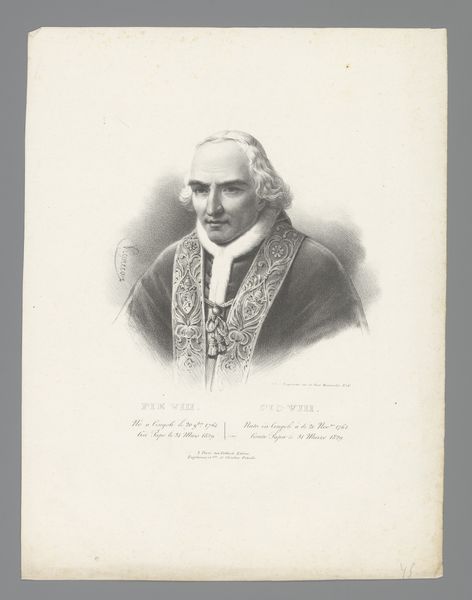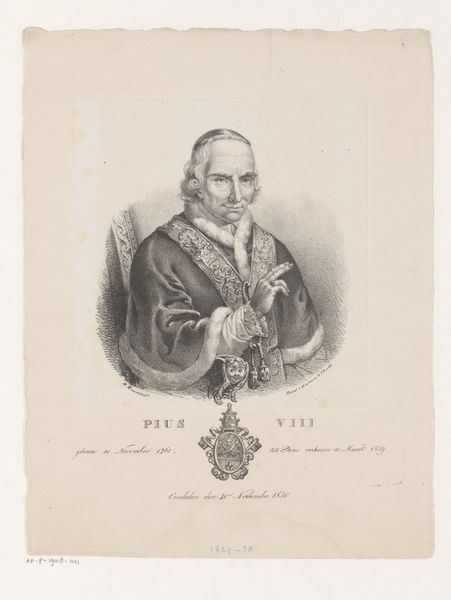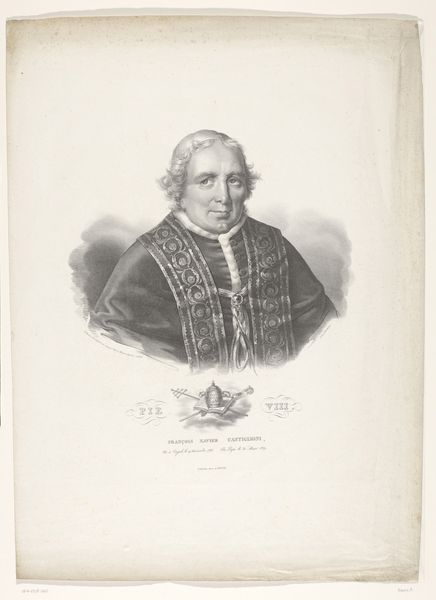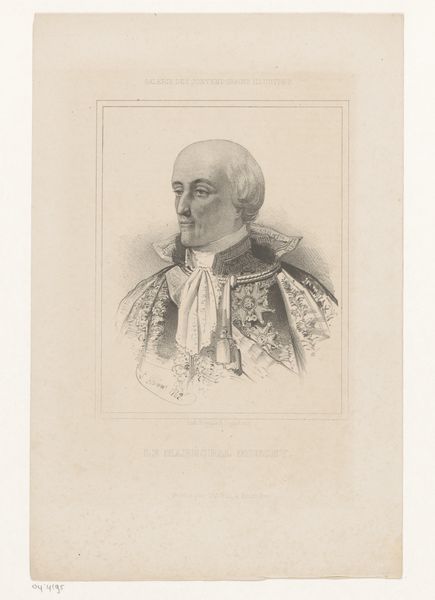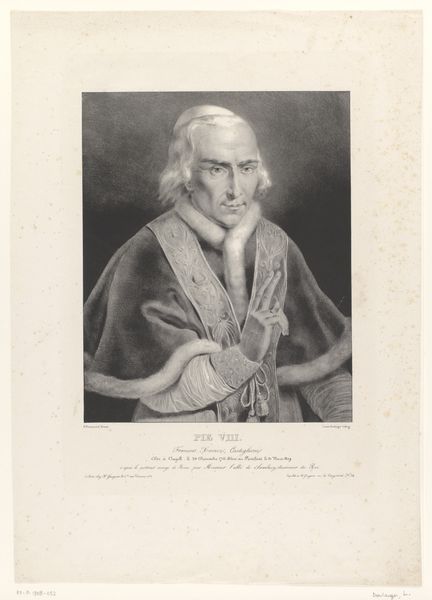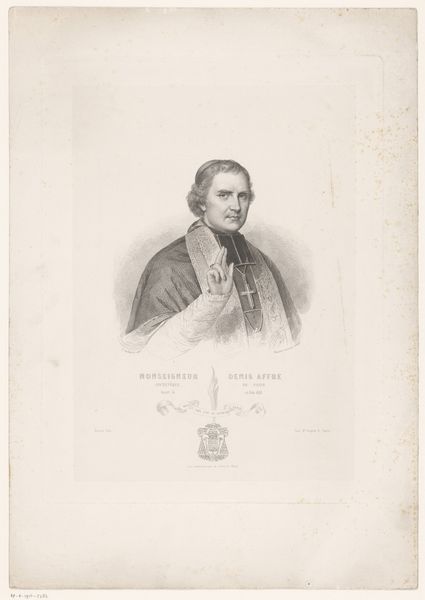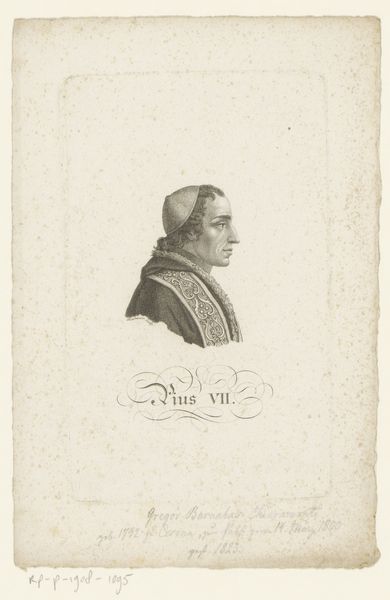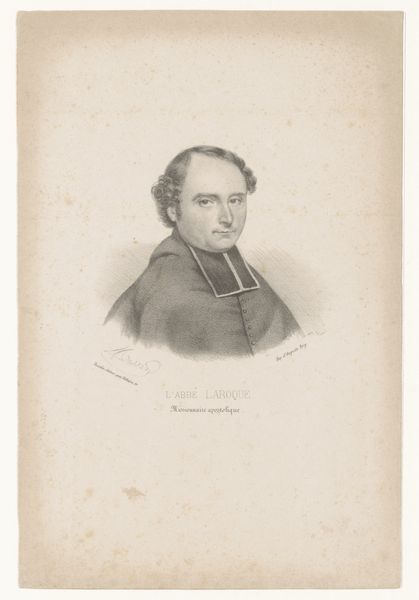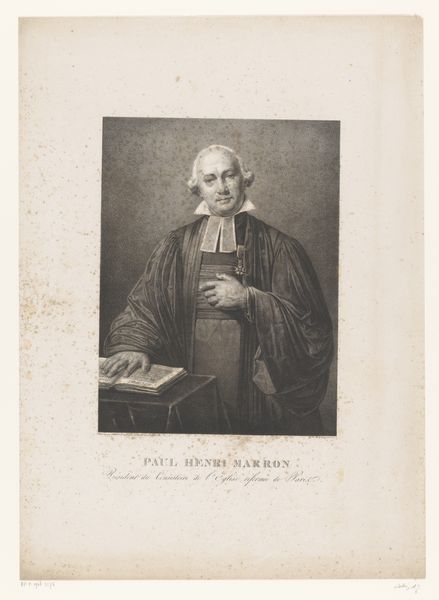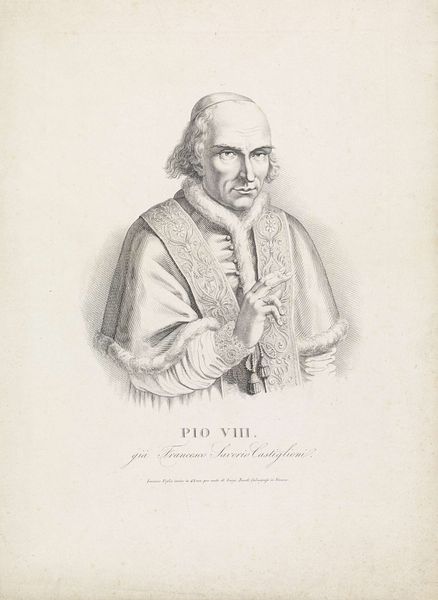
print, engraving
#
portrait
#
neoclacissism
# print
#
old engraving style
#
portrait drawing
#
history-painting
#
engraving
Dimensions: height 263 mm, width 200 mm
Copyright: Rijks Museum: Open Domain
Curator: This is a portrait of Pope Pius VIII by Francesco Ferrari, likely created shortly after 1829. The medium is engraving, rendered in the Neoclassical style. What are your initial thoughts? Editor: Austere and controlled. The high contrast engraving focuses my eye on the face and intricate papal vestments, but it's very linear and precise; almost too precise, in a way that feels static. Curator: That precision reflects the process. Engraving demands a high degree of skill and time. We need to remember the labour involved; the social context. Prints like this one circulated widely, influencing public perception. It's not just about aesthetics. How did such imagery function? Who had access, and what messages were being communicated? Editor: Indeed, the medium does much to solidify a perception of power. The crisp lines contribute to that feeling. Looking at the composition, the arrangement is careful, with the figure slightly off-center to maintain visual balance. I'm particularly drawn to the play of light and shadow that define the pontiff's face, offering it a kind of monumental quality, wouldn’t you agree? Curator: The use of light reinforces hierarchical structures, focusing attention on authority. But the availability of such prints also began to democratise imagery. The Church needed to be *seen* by a wider audience. Editor: It's a subtle detail, but note how the light accentuates his ring—a potent symbol of office, rendered with the same exactness as the folds of his mozzetta. These visual strategies reinforce authority, presenting a figure both divine and grounded in material presence. The pattern and the texture denote the highest of rank, the ring and the soft ermine create an interesting contrast. Curator: Absolutely. The print exists within a network of power relations, influencing tastes, confirming religious beliefs, and generating capital. The creation and dissemination of imagery always intersects with the flow of capital. Who were Ferrari's patrons, for instance? Editor: So much can be read from that intersection. Examining how its lines, textures and overall composition construct a narrative of Papal power. It makes me consider what can be gained through an intentional manipulation of these visual cues. Curator: I agree! The layering of its economic, social and cultural relevance provides an interesting contrast, showcasing how this portrait can become far more than just an image of a single individual, but instead as a study into production, influence, and power of a moment in time. Editor: The way formal elements and process are linked illuminates new and vital understandings about cultural values, in this instance, and indeed others.
Comments
No comments
Be the first to comment and join the conversation on the ultimate creative platform.
